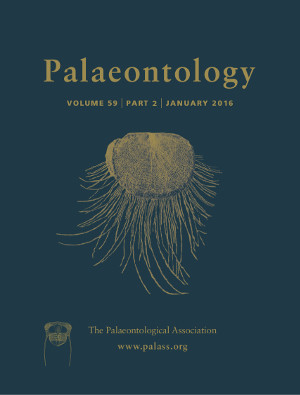Reg. Charity No. 1168330

The oldest talpid, Eotalpa, was previously known only from isolated cheek teeth from the European late Middle Eocene to earliest Oligocene. Screenwashing of Late Eocene sediments of the Hampshire Basin, UK, has yielded cranial and postcranial elements: maxilla, dentary, ulna, metacarpals, distal tibia, astragalus, calcaneum, metatarsals and phalanges. In addition to M1–2 myotodonty, typical talpid features are as follows: ulna with long medially curved olecranon and deep abductor fossa and astragalar body with lateral process. However, Eotalpa retains certain soricid‐like primitive states (M1 preparacrista, P4 with prominent mesiolingual protocone lobe, strongly angled astragalar neck and calcaneum with no space for a cuboid medial process) not found in modern talpids. Eotalpa is more derived than the most primitive living talpid Uropsilus in having lost the M1–2 talon shelf, developed a convex radial facet on the ulna, an incipient proximal olecranon crest, relatively shorter metapodials and depressed manual unguals. Its astragalus with medial trochlear ridge taller than the lateral one and massive medial plantar process is typical of the Lipotyphla. Eotalpa lacks synostosis of tibia and fibula, found in other Talpidae, Soricidae and Erinaceidae, suggesting that synostosis in these groups has been independently acquired. Cladistic analysis places Eotalpa as stem member of the Talpidae and shows that much homoplasy arose during the early evolution of the family. Ground dwelling in Eotalpa is indicated by the following: astragalus with a medially dipping head, curved in a single plane; calcaneum with distal peroneal process and strongly overlapping ectal and sustentacular facets; and matching sized ectal and sustentacular facets on calcaneum and astragalus. These features would have restricted ankle mobility. Ungual and metatarsal shape and ulnar structure suggest a primitive stage in fossorial evolution and argue against a semiaquatic precursor stage in talpid fossoriality. Shrew‐moles may represent a reversal to surface foraging rather than an intermediate stage in fossoriality.